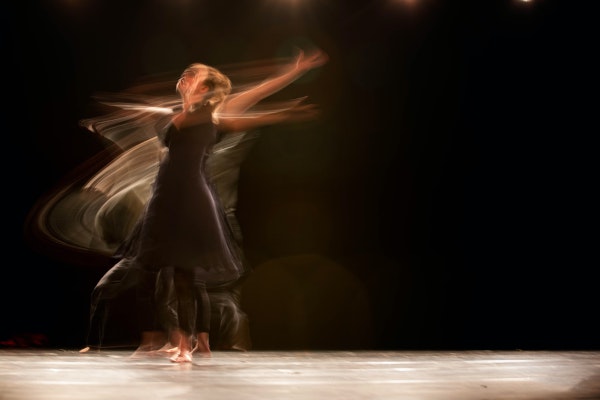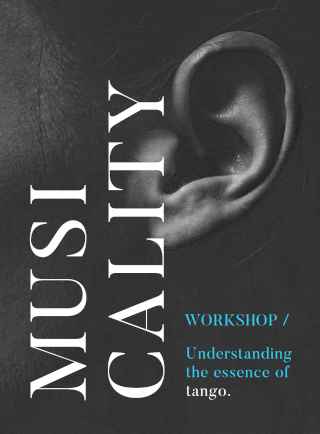What is musicality?
The term “Musicality” is such a broad and abstract concept that it is difficult to understand. In fact, when we look up the definition of this word, we find that the concept is poorly developed.
In principle, musicality is the ability to understand the language of music, and it is this ability that allows us to move through that language, to adopt it, and to give it a personal aspect.
Musicality is a quality of music (the root of the term clearly shows its origin in music), and its etymological meaning is: “Characteristic of being musical”. Again, we find a too broad and/or abstract definition, which I guess only musicians and dancers partially understand its meaning.

I have therefore decided to share with you some publications that I consider important. These publications approach musicality from different angles, and different arts.
In short, all these articles provide the necessary knowledge for a complete understanding of the term.
To do so, we will start with the premise that musicality is a characteristic that can be found in speech, poetry, dance, and other arts.
Musicality in speech
In this first section we will look at a selection of quotations from philosophers, musicologists and educationalists, who suggest that a form of musicality already existed in “speech”. Or in other words, a connection between speech and music.
“Saying and singing used to be the same thing. Which proves, he adds, that poetry is the source of eloquence. Both the one and the other had the same source and were at first the same thing”.
(Rousseau quotes Strabo)
Rousseau also reaffirms this theory by observing the following:
“Rousseau prefers singing to instrumental music because he considers that music finds in it its original nature.
In the past, when man was in a state of nature, music and speech constituted an indivisible nexus and man could express his passions and feelings in the most complete way”.
( E. Fubini quotes Rousseau – 1970)
Another very interesting theory is the one put forward by Steven Mithen (archaeologist, cultural anthropologist) who published “The Singing Neanderthals”, “The Prehistory of the Mind : The Cognitive Origins of Art, Religion and Science”.
Mithen states that prior to the existence of words, emotional communication took place through music (or sounds).
In turn, he points to music as the predecessor of language, and states that the object of music is to express emotions and communicate them.
He also believes that our understanding of the evolution of musical and linguistic abilities is limited. This is because the expression of emotions has not received attention from archaeologists, who were more interested in the intellectual capacities of primitive people than in emotional ones.
Also, within the same current of thought, we find John Blacking (ethnomusicologist and social anthropologist) who states the following:
There is a pre-linguistic, “musical”, non-verbal mode of thought and action.
(John Blacking – “Music, Culture & Experience”)
Musicality and Poetry
“It is certainly an old dream: to turn words into music. But in reality words are already music; that is what good literature is all about. Think, for example, of poetry, which seeks to achieve through the spell of words elevated levels of beauty, harmony and musicality.”
(Raysan, The Musicality of Words)
As in the previous chapter, in which several theories about the connection between music and speech were presented, in this section we will analyse the same musical aspect in poetry.
According to the Greeks there are three types of poetry: Lyric poetry (sung to the accompaniment of the Lyre or hand harp) which is the meaning that later became generalised for the word even without music, dramatic or theatrical poetry, and epic or narrative poetry.
Clearly, if we delve deeper into the world of poetry, we will find that there are also other types. For example, the avant-garde currents of the 20th century gave rise to phonetic poetry and sound poetry, in which musicality and sounds are explored without limits.
However, we will not delve into an in-depth analysis of this subject, but will focus mainly on the poetry-musicality connection.
For those interested in learning more about types of poetry, I recommend the following sites : history of poetry > Wikipedia, types of poetry > Haytipos.com (spanish), poetic avant-garde > “From Phonetic Poetry to Sound Poetry” (spanish).
Now, turning to the subject that concerns us, we find that in poetry, musicality is generated by the internal rhythm that each verse possesses. That is to say, it is generated by the rhyme or by the rhythm that dominates the poem within it.
Here some explanatory videos:
The rhythm of a poem is generated by the accents, the pauses (strophic, versal, caesura), and the enjambment (rhetorical figure that consists of not ending the phrases at the end of the line but in the following line).
¡Amoroso pájaro que trinos exhala
bajo el ala a veces ocultando el pico;
que desdenes rudos lanza bajo el ala,
bajo el ala aleve del leve abanico!
Rhythm can also be achieved thanks to the intentional use of phonemes (phonemes are basic theoretical units postulated to study the phonic-phonological level of a human language), as can be seen in these words of the poet Rubén Darío: Bajo el ala aleve del leve abanico (Under the light wing of the light fan).
Now that we have a general overview of poetry and musicality, we will make a brief parenthesis to introduce the concept of “Recitado” (Recitation), and then go on to listen to some examples.
Recitation
Reciting is the act of vocalizing a speech or sentence aloud.
The term “recite” can be used for any kind of reading, literary or scientific texts, but it is usually used mainly for the declamation of a poetic work. The reciter adds a series of ornaments to his or her attitude and voice to enhance the beauty of the verses, or to reinforce the meaning of the text.
Let us listen to the following examples:
Poem 20 by Pablo Neruda is about the loss of romantic love and the nostalgia of remembering the loved one.
It expresses the end of a love relationship with feelings of pain, loneliness and melancholy.
Throughout the recitation Neruda reinforces these feelings through his tone of voice, the rhythm and speed of his recitation, and the pauses.
We could say that this is the musicality that the poem suggests to him at the moment of recitation. And furthermore, thanks to his interpretation of it, the reciter reinforces the meaning of the words.
We also find two well-known examples of tangos recited by Julio Sosa and Roberto Goyeneche. And an extra one by Johnny Cash to compare with another musical style.
I must admit that in the following recitations the interpretation and acting are so good, and of such great talent, that we can doubt whether the musicality comes from the poetry or from the recitation.
From my point of view, the text proposes a certain musicality, and the reciter enhances it with his interpretation.
Let us remember that these texts or poems were written without music, and although they are not a melody in themselves, in the following examples we could almost say that they are.
Avant-garde poetry and its musical imprint
Finally we come to phonetic poetry, which emerged at the beginning of the 20th century in avant-garde movements such as Dadaism, Merz, and Russian and Italian futurism.
Unlike traditional declamatory or recited poetry, phonetic poetry (of an experimental nature) is based on the sound resources of language, syllabic games, lexical distortions, uses noises and phonetic techniques that are autonomous from the lexical level. In other words, it avoids using the word as the sole vehicle of meaning.
In phonetic poems, the basic elements of music are developed: intensity, sound, time, tone colour, etc. Phonetic poetry is not a hybrid of music and literature, it is both.
By the 1950s, concepts from those avant-garde movements of the beginning of the century were taken up again, and with the advent of technology, Sound Poetry, a direct relative of phonetic poetry, was born.
Henri Chopin defines sound poetry as the acts made by and for the tape recorder, “the sound poet”, he says, “can encode his poems with the help of electronic machines and mathematics that are more exact than graphic techniques”.
Conclusion
We have first read the theories that suggest that prior to the use of words, man was already communicating musically through sounds and songs.
Additionally, once lexical vocabulary was introduced, we noted that musicality in speech enriches the expression of feelings and meanings.
Secondly, we have delved into poetry. From its origins, the Greeks used to accompany poetry with a musical instrument (lyric poetry). This shows that the poetry-music nexus existed from the very beginning.
In addition to this reason, the words or phonemes used and the construction of the verses seek a certain rhythmic musicality and rhyme.
In the third instance we find the recitation. In which the reciter interprets the poem, adding even more to the suggested musicality of the poem, and enhances the meaning of the poem.
In the next chapter we will come to the final objective of the analysis. Or perhaps the point that interests us most about musicality: Musicality in Dance.
And we will deal above all with Tango Musicality. Keep reading !
Check out our most recent articles.
If you want to improve your musicality, please check out our Musicality course, it will help you to develop these concepts in a simple and practical way (read more).

